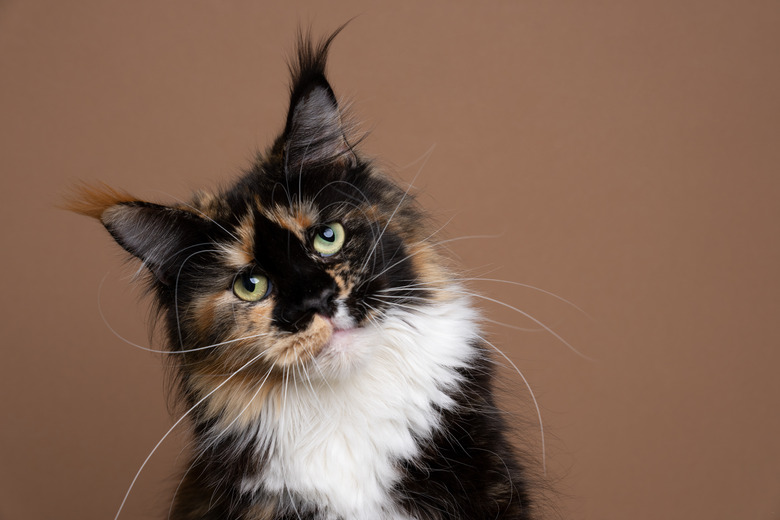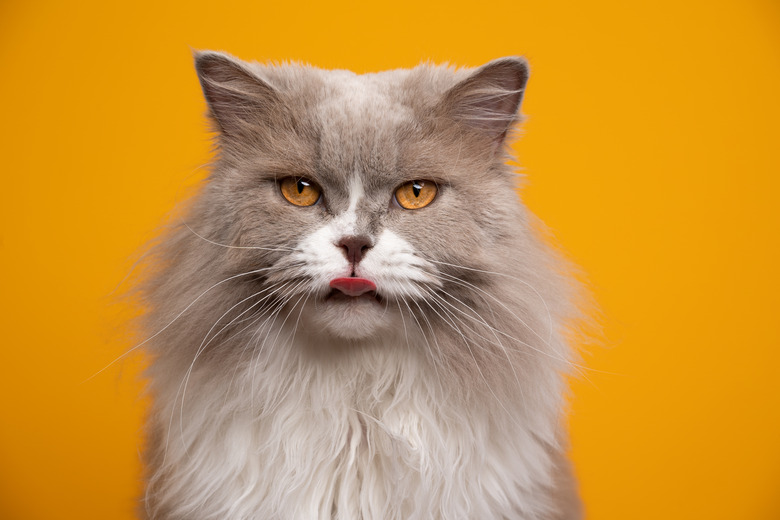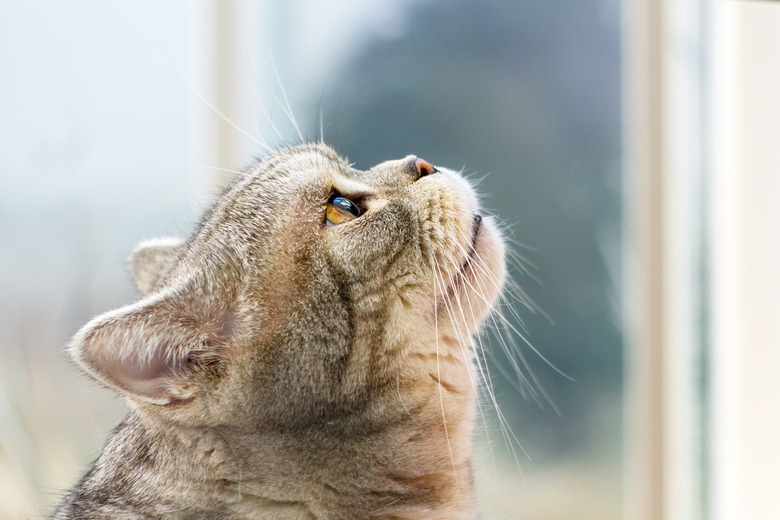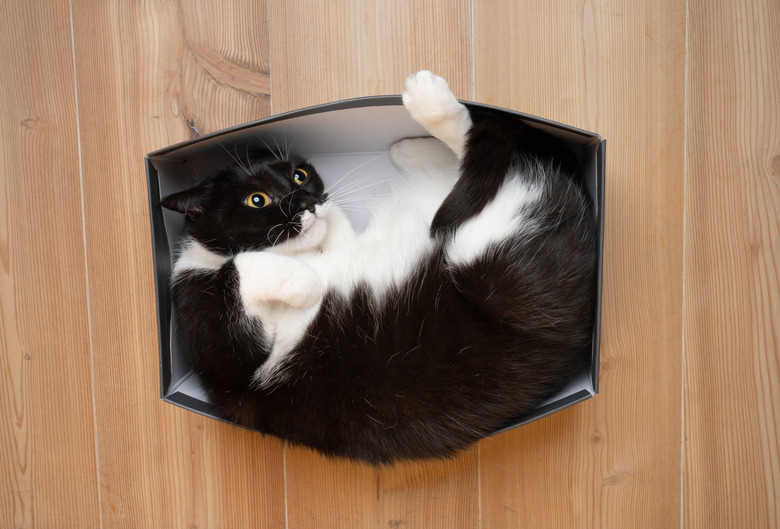How To Tell What Breed Your Cat Is
Curious about how to tell what breed your cat is? Well, you're not alone. Most pet parents, at some point in time, have wondered about their cat's breed. While it can be challenging to figure out your mouser's, or domestic cat's lineage, there are a few ways to tell what their breed might be.
Purebreds and mixes
Purebreds and mixes
Purebred cats are much rarer than dogs. Less than 3 percent of cats are adopted from breeders, according to the American Society for the Prevention of Cruelty to Animals. This means the vast majority of cats in Western households are mixes of several breeds.
Unless your cat came with pedigree papers identifying their breed, the only way to find out with any certainty is through a DNA test.
Luckily, DNA kits for cats are much more affordable today, than they were several years ago. But unless you plan on entering your Instagram star into competitive cat shows, the expense of a DNA test may not be worth it.
So, your cat is most likely a mix, con-cat-ulations! Furthermore, if you're just generally curious, we'll walk you through how to tell what breed your cat most resembles!
Is your cat a longhair or shorthair cat?
Is your cat a longhair or shorthair cat?
The first step to determine a breed is whether or not your cat is a shorthair or longhair. Veterinarians often refer to these categories as "domestic shorthair" and "domestic longhair".
Longhair cats
Longhair cats
While there is no official designation of what exactly constitutes a longhaired coat, you're looking for fluffy, dense coifs. If your cat has issues with hairballs or needs lots of brushing to keep their coats groomed, then there's a good chance you have a longhair.
Here are a few common longhair cat breeds:
- Balinese
- Birman
- British Longhair
- Himalayan
- Maine Coon
- Persian
- Ragdoll
This is certainly not an exhaustive list of longhair cats, but these are some of the more common ones.
Shorthair cats
Shorthair cats
Some of the more popular cats have short to medium-length coats. While a shorthair coat can be thin, that's not always the case. Many coats can still be thick and closely knit. As a general rule of thumb, when a cat's coat is less than half the length of your pinky, your cat is probably a shorthair.
Some common shorthair cat breeds are:
- Abyssinian
- American Shorthair
- Bengal
- Bombay
- Havana Brown
- Russian Blue
- Tonkinese
Keep in mind that if your cat is a mix (and they probably are), then it may be challenging to use coat length to identify your cat's breed, especially when a longhair and shorthair mate. This is why it's important to use a few characteristics to tell what breed your cat is.
Guessing your cat’s breed by their size
Guessing your cat's breed by their size
This breed characteristic is less useful for kittens who have yet to grow into their adorable paws. But for full-grown mousers (a domestic cat, or farm cat), their size can be a telling feature of their breed.
Be mindful of the fact that many cat breeds can grow to nearly any size. And if your kitty enjoys several dinners a night, then obesity may be obscuring their true size.
Large cat breeds
Large cat breeds
Big cats can weigh anywhere from 10 to 25 pounds. But if you have a miniature tiger napping on your couch, they can grow to 30 pounds or more.
Some of the common large cat breeds include:
- American Bobtail
- Bengal
- Egyptian Mau
- Maine Coon
- Norwegian Forest Cat
- Siberian
- Ragamuffin
- Ragdoll
- Savannah
- Siberian
Small cat breeds
Small cat breeds
Similar to their larger cousins, small cat breeds may look remarkably different from each other. Yet, they all share a smaller frame and features, and usually weigh between 5 to 10 pounds. But a few demure kitties can tip the scales at a healthy 15 pounds.
Here are some of the smaller cat breeds that are commonly found in households:
- Abyssinian
- American Curl
- Burmese
- Cornish Rex
- Devon Rex
- Japanese Bobtail
- LaPerm
- Siamese
- Singapura
Your cat’s coat color and pattern can tell you their breed
Your cat's coat color and pattern can tell you their breed
Your mouser's fur color and markings are also a reliable indicator of their breed. Again, since your cat is in all likelihood a mix, examine their coat for a blend of patterns and colors.
Calico
Calico
Calico coats generally have three tones with one of them always being white. The other colors can be orange, black, or blue-gray.
Calico markings are often confused with tortoiseshell patterns, but the real determining factor is the dominant presence of white fur. Also, fun fact, most calico cats are female. Males are rare and are always sterile.
- American Shorthair
- British Shorthair
- Devon Rex
- Maine Coon
- Manx
- Norwegian Forest Cat
- Japanese Bobtail
- Persian
- Scottish Fold
Pointed
Pointed
Cats with a pointed coat present most of their color in their face, feet, ears, and tails. The Siamese is a popular example of a cat with a pointed pattern.
- Balinese
- Birman
- British Shorthair
- Himalayan
- Javanese
- Ragamuffin
- Ragdoll
- Siamese
- Siberian
- Tonkinese
Tabby
Tabby
Probably the most popular coat pattern belongs to the tabby. Their coats have a wide range of colorings, but there are several dominant styles:
- Classic: twisted pattern with circular markings
- Mackerel: tapered and parallel bands
- Patched: patches of color.
- Spotted: darker-colored spots on light backcloth
- Ticked: multiple strips of color on each strand of hair
Common cat breeds with tabby coats:
- Abyssinain
- American Bobtail
- American Curl
- Balinese
- Bengal
- British Shorthair
- Cornish Rex
- Egyptian Mau
- LaPerm
- Persian
- Ragamuffin
Piebald
Piebald
Often called tuxedo cats or bicolor, the piebald pattern is a blend of white fur with a secondary and even tertiary color.
- Angora
- Arabian Mau
- British Longhair
- European Shorthair
- Peterbald
- Persian
- Scottish Fold
- Sphynx
Tortoiseshell
Tortoiseshell
Affectionately referred to as torties, the tortoiseshell coat cans have any two colors, except white. These two colors may swirl together or occasionally blend. Common tortoiseshell colors are red and black but can also include brown, grey, orange, yellow, and more.
Torties are often confused with calicos but remember: calicos always have white fur in their pattern. Whereas tortoiseshell coats never contain white.
- American Shorthair
- British Shorthair
- Cornish Rex
- Japanese Bobtail
- Maine Coon
- Persian
In summary
In summary
It's generally challenging to tell what breed your cat is because roughly 97 percent of cats kept as pets are mixes, according to the ASPCA.
Outside of a DNA test, you'll have difficulty determining your kitty's specific breed, so it's best to determine what breeds your cat resembles.



